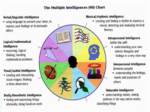Some learn better with drills, some by video review, some by being described a "feel", and others can simply be told exactly what they need to accomplish and they're able to pull it off. For most, I'd guess it's a combination of more than one. Some don't care why something works, others have to understand the reasoning.
It seems like I learn best by a described feel - usually an exaggeration of where I need to be. An example would be told to "swing to right field" to correct swing path issues. Being told to "shallow the club", "stay on plane", or "release the club" and I'm clueless on what to do.
What about others? Whether students or instructors, what method(s) helped the most?
It seems like I learn best by a described feel - usually an exaggeration of where I need to be. An example would be told to "swing to right field" to correct swing path issues. Being told to "shallow the club", "stay on plane", or "release the club" and I'm clueless on what to do.
What about others? Whether students or instructors, what method(s) helped the most?














